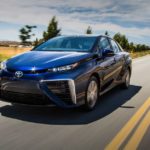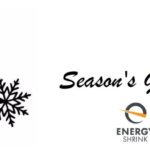Electric Cars: More Hype, Not So Clean
The excitement around electric cars seems like a lot of hype. Electric cars do not seem to be a step forward in the right direction. In the long term, they will probably end up as more of a diversion from the way ahead. Below are two main reasons I think so, and a possible alternative.
Electric cars are not clean
People tend to think of electric cars as ‘clean’ compared to petrol cars simply because they cannot ‘see’ the emissions being produced. The fact is that producing electricity also produces large amounts of emissions. With an electric car you don’t see the pollution at the end of your tail pipe, but it is certainly in your atmosphere.
How dirty the electricity is depends on the mix of the sources. In the U.S. the mix is 50% from coal plants (mostly for base load as coal/thermal plants cannot be easily switched on and off), 20% natural gas, 20% nuclear, 6% hydro, 1% fuel oil, and 3% renewables + other (http://www.getenergyactive.org/fuel/mix.htm)
If you compare the combustion efficiency of a car engine to that of the electric generation plants, and factor in transportation losses, electricity is not much cleaner (with the exact % being dependent on fuel mix on one hand, and car engine efficiencies on the other).
The recent Economist (Oct 9th-15th, 2010, p.26) states, “An electric car in Britain today produces around 20% less in CO2 emissions than a car with a petrol engine.” The same article states “…According to Richard Pike, chief executive of the Royal Society of Chemistry, replacing all of Britain’s cars with subsidised electric cars would cost the taxpayer 150billion pounds, and with Britain’s current fuel mix, cut CO2 emissions from cars by about 2%. For the same money, Britain could replace its entire power-generation stock with solar cells and cut its emissions by a third.”
Electric cars will cause a rise in emissions
The theory behind the idea of electric cars being environmentally friendly is that they use electricity that would otherwise go waste. Coal-fired thermal plants take days to fully get going after they are switched on, and cannot be shut on and off based on demand during a 24-hour cycle. So they are producing electricity at night that is not being used and cannot be stored. The idea is that by being plugged into the grid at night, electric cars will be using this ‘waste’ electricity, causing no increase in emissions from producing electricity, and causing a decrease in emissions from petrol, thus causing a net decrease in emissions.
However, utility providers are already concerned that customers are not going to be disciplined about charging their cars only at night. Charging the cars during the day is going to overload an already max-ed out grid, creating reliability issues. Think brownouts and blackouts.
An overloaded grid also equates to more dirty electricity. Coal is the cheapest means of producing electricity in the US. Therefore, coal-fired thermal plants are sized to meet base load, with other plants designed to meet varying demand during the day. Coal is also the dirtiest fuel. If electric cars cause a rise in base load, the use of coal-fired thermal plants will continue to increase. A major aim of the greenhouse gas reduction efforts is to reduce electric base load by a certain % every year to reduce overall societal emissions. This goal will be in jeopardy with the advent of electric cars.
Solutions
When asked about alternatives to gas/petrol cars, the typical responses tend to focus on alternative fuels: electricity, fuel cells, solar. The solutions need not be so single-industry focused. We need to look at the whole transportation ecosystem to come up with the right answer.
CLEANER ELECTRICITY
Electric vehicles could be cleaner if the source of electricity was cleaner. Utilities are looking to nuclear plants as a clean option. But no one wants to talk about what they will do the radio-active waste. Electricity from renewables is another option. But by most studies, we cannot expect renewables to generate more than a tiny fraction of total electric demand. Then there is the problem of transporting this electricity. Wind power generated in Texas will need an updated grid to reach Montana and the long distance will mean heavy transmission and distribution (T&D) losses.
FUEL CELL CARS
Fuel cell cars are touted as another alternative. But commercial availability of fuel cell cars seems to be a few years away. Honda’s FCX Clarity is on the roads. Let’s see how it fares (http://automobiles.honda.com/fcx-clarity/)
MASS TRANSPORTATION
One solution is to pump money into mass transportation. A clean, punctual, and frequent mass transportation system can provide large reductions in emissions besides resulting in fewer road accidents, less stress, and a less isolated society. For the mass transportation system to work, it has to have small arteries with nodes very close to people’s homes or place of work. It also must be punctual and frequent to avoid stress. And it has to include convenient ways to transport groceries, baggage, babies and bicycles.
It should be possible to fund mass transportation projects by diverting some of the subsidies being provided to programs such as Cash for Clunkers and hybrid and electric cars. Mass transportation improvements can also have a strong public appeal if the projects are marketed properly, making it easier for the policy to be popular and therefore win the backing of politicians.
In a nutshell, at this time, making effective upgrades to mass transportation appears to be the best way forward if we are serious about cutting emissions.
Read our related blog post update from December 2018: Fuel Cell Cars: Making Our Future Possible Today
Sustainability benefits small businesses in China
Brilliance in design: A nod to the sun at the Embajada de Mexico on Pennsylvania Avenue in DC





